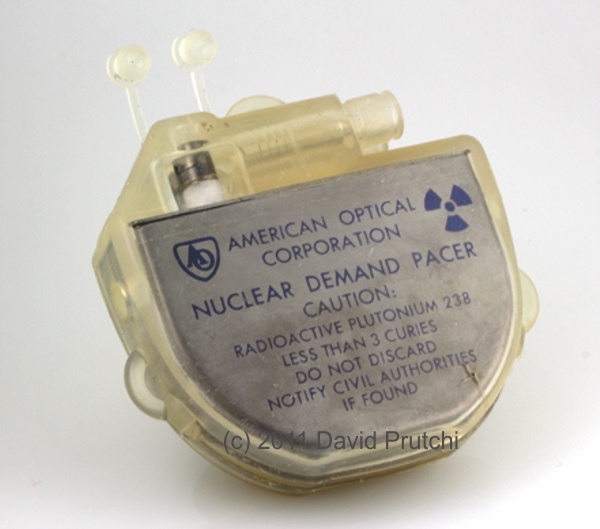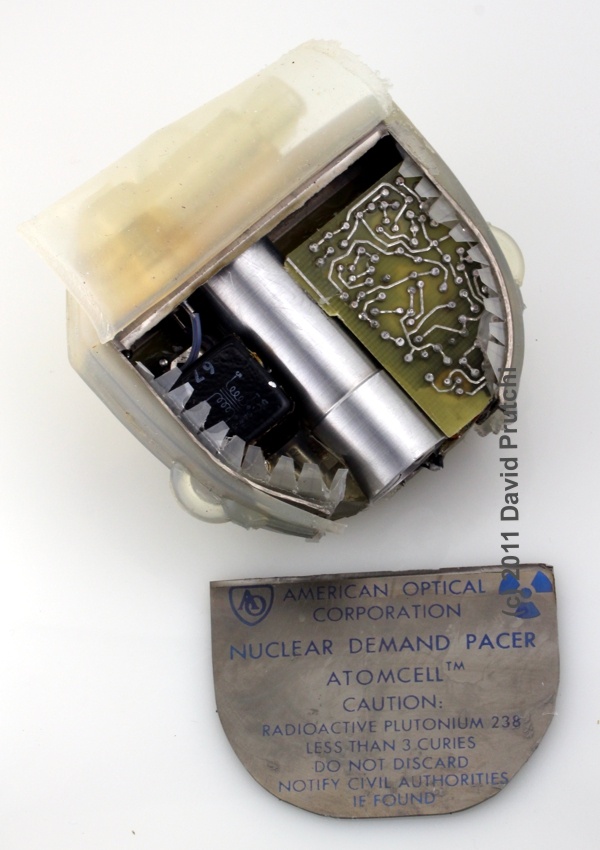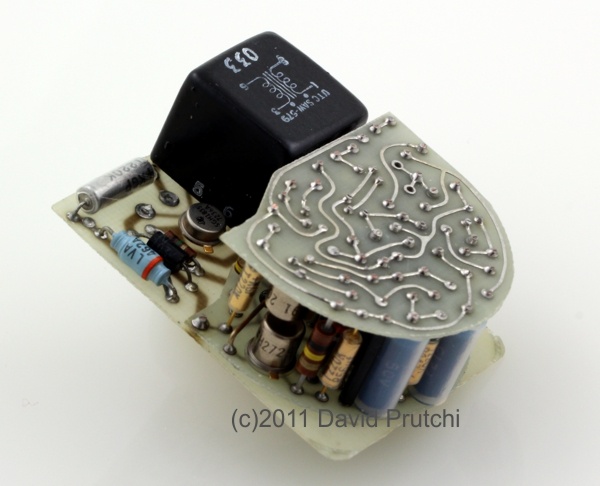
Barouh Berkovits at American Optical Co of Boston, MA designed the first “Demand Pacemaker” – what we now know as a VVI pacemaker. As other companies in the 1970s, American Optical developed a nuclear-battery-powered version of their pacemaker.
American Optical used a 3Ci Pu-238 Radioisotope Thermal Generator (RTG) produced by Fred Hittman’s Hittman Nuclear Development Corp. (Model NB-200). It consisted of a tiny 8 Ci slug of metallic Plutonium 238 (Pu-238). The radiation produced by the Pu-238 bombarded the walls of its container, producing heat that a thermopile then converted to an electrical current. A thermopile is a stack of thermocouples, which are devices that convert thermal energy directly into electrical energy using Seebeck effect. The thermocouple was made of two kinds of metal (or semiconductors) connected to each other in a closed loop. If the two junctions are at different temperatures, an electric current will flow in the loop.
NOTE: This pacemaker is an inert unit in my private collection. I do not personally possess any live atomic pacemakers or RTGs.
Click here for my paper on nuclear-powered pacemakers.
Click here for the authoritative paper on nuclear batteries for pacemakers: Fred N. Huffman, et al., RADIOISOTOPE POWERED CARDIAC PACEMAKERS, Cardiovasc Dis., 1(1): 52–60, 1974. (Copyright notice: This article is free from www.pubmedcentral.nih.gov).
Click here to find out what to do if you find a nuclear pacemaker.

- Internal assembly of the American Optical nuclear demand pacemaker. A dummy aluminum cylinder replaces the Hittman Pu-238 RTG in this picture

- Electronic assembly of the American Optical Nuclear Demand Pacemaker
